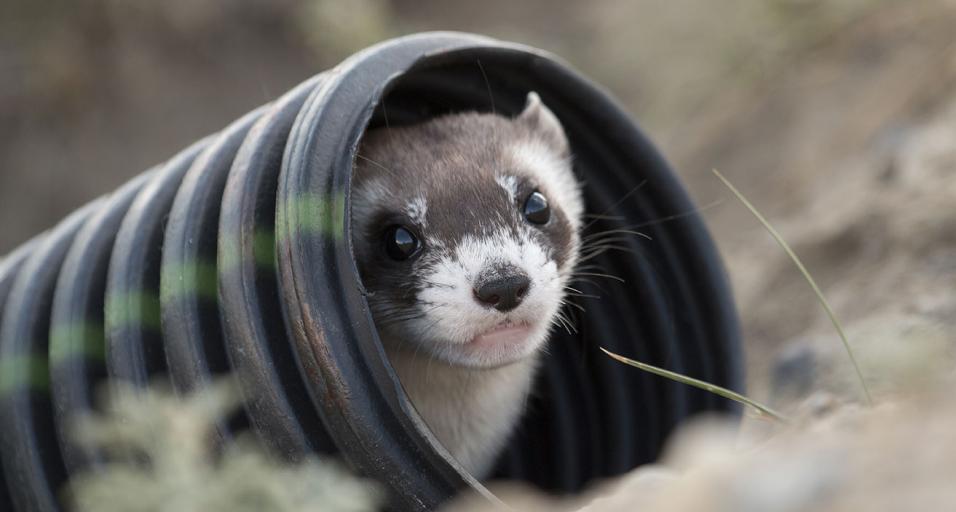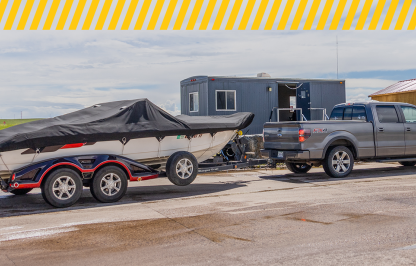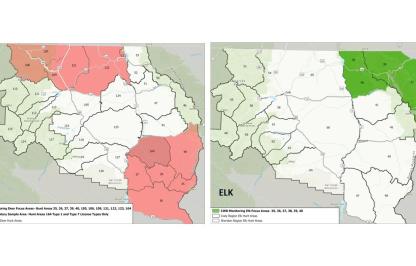Population reports for what is known as one of North America’s most endangered mammals, the black-footed ferret, came in positive this fall. The Wyoming Game and Fish Department recently completed population surveys in Meeteetse and Shirley Basin. Both areas report higher than average ferret sightings.
“It’s been a good year for ferrets in Wyoming,” said Jesse Boulerice, Wyoming Game and Fish Department nongame biologist.
In July this year, 35 ferrets were released on the Lazy BV and Pitchfork Ranches, outside Meeteetse, Wyoming. This is the same spot where ferrets were rediscovered 35 years ago when they were thought to be extinct. During surveys this fall, over half of those resettled ferrets were spotted or caught and identified, some still residing in the same burrows in which they were initially released.
“We ended up observing or capturing 19 of the 35 ferrets released, one of the highest post-release capture rates at a new reintroduction site,” said Nichole Bjornlie, Game and Fish nongame mammal biologist. “It’s validating to find these ferrets in the same place we put them.”
Both Boulerice and Bjornlie note if a ferret wasn’t spotted, it doesn’t mean it is deceased. The ferret could have dispersed, as they are known to do, to another location with dense prairie dog colonies outside the survey zone.
“In the Meeteetse area, we surveyed 8,500 acres. We found some ferrets traveled over three miles from their original release site,” said Boulerice.
Black-footed ferret surveys in the Shirley Basin area also reported increased sightings. Surveyors were able to see 34 ferrets and capture 19. Notably, blood samples from all captured ferrets were negative for plague, distemper, and tularemia. Ferrets were reintroduced to the Shirley Basin 25 years ago. This was the first wild reintroduction site in the country.
In both locations, black-footed ferrets are surveyed at night using a spotlight to catch a glimpse of their distinctive bright emerald green eyeshine. Once spotted, surveyors will set a trap for the ferret in their burrow. The Meeteetse area ferrets, who were all captive-born kits when released in July, were scanned for their unique identifier number (Passive Integrated Transponder or PIT tag) and released with a dye mark so they wouldn’t be recaptured. Meeteetse ferrets received all vaccinations and disease tests before being released in July. Ferrets in Shirley Basin, who range from kits to mature adults, received a more thorough physical, vaccinations, and PIT tags, if needed.
Looking forward, black-footed ferrets have much potential, but their population growth depends on habitat conditions, good prairie dog density, and controlling disease. Black-footed ferrets breed in March and early April, with litter size ranging from 1-5 kits. Surveys next fall will be able to show the success of ferrets back in Meeteetse on a larger scale when wild-born kits will be counted.
“It has been exciting to put ferrets back in Meeteetse, restore a top predator on the landscape, and see them function again in a working ecosystem,” said Bjornlie.
Black-footed ferret surveys report higher than average sightings
Wyoming Game and Fish (307) 777-4600




